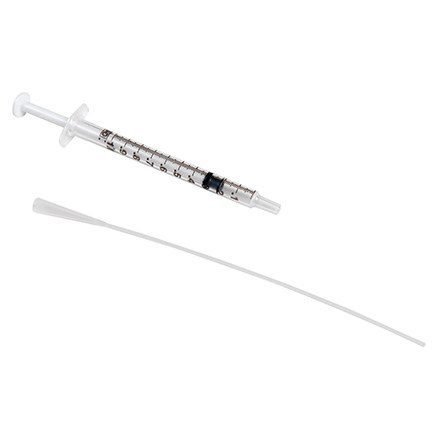Last Updated on March 12, 2024 by admin
Intrauterine fertilization (IUI), also known as artificial insemination, can be used to treat infertility.
The sperm that has been concentrated and washed are immediately placed in your body when your eggs become fertilized.
IUI can be combined either with your regular cycle or with fertility medicines from a well-settled fertility clinic depending on the reason.
Table of Contents
It Is Possible
The ability of a couple to get pregnant is dependent on several factors. The most common use of intrauterine insemination in couples with:
Donor sperm.
IUI for women who are unable to use donor eggs to get pregnant is the best option. Frozen donor-sperm specimens must be obtained from accredited labs before they can be used for IUI.
Unexplained infertility.
IUI may be combined with ovulation-inducing medication.
Mild infertility is caused by a male factor.
Semen analysis of your partner is one of the first steps in the medical assessment of infertility. It may reveal below-average sperm content, low movement (motility), abnormal sperm size or shape (morphology). IUI can resolve some of these problems by separating normal, highly motile, and high-quality sperm from those with lower quality.
Cervical factor infertility.
Your cervix is the part that opens between your uterus (and vagina) and your cervix. The environment created by the cervix at the time of infertility provides a perfect environment for sperm’s journey from your vagina into the fallopian tubs. The sperm may not travel well if the cervical mucus becomes too thick. The sperm might not reach the egg because of the thickened cervix. Scarring caused by procedures such as a biopsy, or any other procedure, can cause the cervical to thicken. IUI bypasses the cervix. It deposits sperm directly into your uterus. This increases the number available for the awaiting egg.
Ovulatory factor infertility.
IUI might also be performed in cases where there are problems with infertility, such as a lack of ovulation and/or fewer eggs.
Semen allergic.
Rarely can an allergy to proteins found in semen cause infertility. Ejaculation in the vagina causes redness. Not only can it protect you from these symptoms, but it also helps to prevent pregnancy. IUI may prove to be beneficial if your symptoms are severe. IUI removes many of the proteins from the sperm before inserting it.
There Are Always Risks
Intrauterine Insemination is an easy procedure that is safe and does not pose a risk for serious complications. The following are the risks:
Spotting.
Sometimes, the procedure of placing the catheter inside the uterus may cause some vaginal bleeding. This usually doesn’t affect the chance of getting pregnant.
Multiple pregnancies.
IUI by itself is not associated with an increase in the risk of multiple pregnancies. When multiple pregnancies are possible, however, it can be made more difficult by combining ovulation-inducing medicines. A multiple pregnancy poses higher risks than a single one, with low birth weight and early labor.
How To Prepare?
Insemination Intrauterine Requires Coordination Before The Actual Procedure.
Preparing your semen samples.
Your partner can give you a sample at her doctor’s office or a vial froze donor sperm that you can thaw and prepare.
Nonsperm elements in semen may cause adverse reactions in the woman’s reproductive system. Therefore, the sample must be washed in a manner that separates active, normal, and lower quality sperm. By using a concentrated, small sample of healthy fertile sperm, the likelihood of having a baby increases.
Monitoring for ovulation.
Since IUI timing is so important, it is vital to watch for signs of impending IUI. A home urine ovulation predictor kit can detect when your body releases luteinizing hormone. A transvaginal ultrasound is an imaging procedure that allows your doctor to see the growth of your eggs and your ovaries. Also, you may receive an injection of human embryonic gonadotropin(HCG) or other medication to increase your ovulation.
How to determine the optimal timing.
IUIs usually are performed within two days after detecting ovulation. Your doctor, or any other healthcare provider, will outline the timing of your procedure as well as what to expect.
What You Can Count On
The average visit to intrauterine injection takes around 15 to 20 mins and is done in a physician’s office. IUI only takes a few minutes. There are no pain relievers and medications required. The procedure will be performed by either a trained nurse or a doctor.
When you are lying down on an exam desk, your legs will be in stirrups. A speculum is inserted into your vagina by your doctor or nurse the same as what you see during a Pap check. The nurse or doctor may assist you during the procedure.
A Quick Overview
Intrauterine insemination (IUI) is a type of assisted reproductive technology that involves placing sperm directly into the uterus during ovulation. This procedure can be used as a first-line treatment for certain fertility problems or in conjunction with other fertility treatments.
During the IUI procedure, the sperm is collected and processed to concentrate the healthy and active sperm. The sperm is then inserted into the uterus using a small catheter during the time of ovulation. The process is relatively simple and minimally invasive, with little discomfort or recovery time required.
IUI is often used to treat unexplained infertility, male factor infertility, or cervical factor infertility. It may also be recommended for women who have ovulation disorders, endometriosis, or mild to moderate pelvic adhesions. In some cases, medications may be used to stimulate ovulation before the IUI procedure.
While IUI is a relatively simple and safe procedure, its success rate can vary widely depending on several factors, including the age of the woman, the quality of the sperm, and the underlying cause of infertility. IUI success rates generally range from 5 to 20 percent per cycle.






















